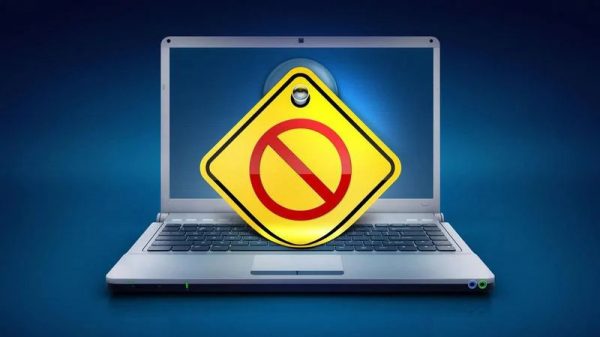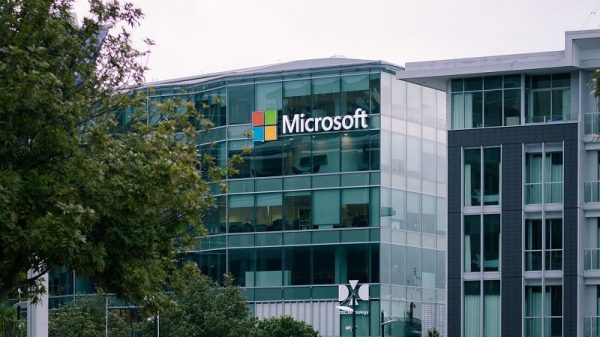In the wake of the COVID-19 induced lockdown, e-commerce players and their logistics partners had to rethink every part of their operations. Not only did they face logistical challenges to deliver goods to their customers, but they had to rethink existing internal processes and build new ways of working given the external challenges. A year later, e-commerce companies have since restructured themselves, with better internal coordination, quicker communication with government, and better technology tools.
MediaNama spoke to Amitesh Jha, Senior Vice-President at Flipkart and Mohit Sardana, Chief Operating Officer for food delivery at Zomato last week, to understand how e-commerce companies dealt with the disruptions caused by the pandemic, the impact on labour, supply chains, and consumer behaviour. MediaNama hosted the discussion with support from Flipkart. Stanford Alumni India Chapter (North & East) was a Community Partner and the Headstart Network was the Startup Ecosystem Partner for this session.
Edited excerpts from our discussion with executives from Zomato and Flipkart. Quotes have been edited slightly for clarity and brevity.
E-commerce volumes above pre-COVID levels
For both Zomato and Flipkart, overall delivery volumes have crossed their pre-COVID levels primarily driven by higher adoption beyond the top metro cities. “The primary reason being that access to goods, access to essentials, were being provided all over India only by e-commerce players. One of the big changes we saw was a marked improvement in the adoption of e-commerce in the Tier II, III cities. Because when the supply chain gets disrupted the whole market gets disrupted. So we have seen a shift in customers’ preferences, more so in all the other cities. It is a secular growth across the board and we see that continuing in 2021 as well,” said Jha of Flipkart.
The pandemic was sudden and shocking for everyone in the country, leading to a lot of confusion for e-commerce players, said Jha. “During the initial stages, cross-border movement of goods was not very smooth and only essential goods were allowed. Where Flipkart does very well is that we have a very strong seller base that sells from their own warehouses not from our warehouses. So, it is a distributed sourcing model as well,” he said
“Since we have a large number of sellers, they could easily replicate the inventory. We worked more with the sellers to tell them that certain goods were geographically restricted, therefore ‘if you have more of those items, it will allow you to sell in those specific areas’. It was a partnership between us. Similarly, for small sellers we made sure that we were providing the items in a legal way. Our sellers, really grew to that occasion.”—Amitesh Jha, Senior Vice-President, Flipkart
To understand how e-commerce companies operated during the pandemic, we have to split the last year into three phases, said Sardana of Zomato. Phase-1 between April and May when supply chains were severely disrupted; Phase 2 was the unlocking period where companies and restaurants that shut down tried to regain their footing till October and Phase 3 between October and December when delivery volumes began to rebound, he explained.
“At that time, we saw a severe disruption. The number of restaurants reduced to about 30% of our pre-COVID levels and that’s where our volume also kind of went down. Because a lot of people got stuck cities where they did not really have support for their day to day needs, we had to figure out how to operate for people for whom food was an essential service. As the unlock process started for the country, we worked with the restaurants and started getting them online. We also began to work on hygiene standards for the industry.” — Mohit Sardana, Chief Operating Officer for food delivery, Zomato.
Post October, Zomato has been working on growing its restaurant base and adding more users, Sardana said. “Outside food consumption at home has also become a very normal thing post-COVID. Because of this, there are newer restaurants that are opening. So the absolute number of restaurants are actually higher than where we were at pre-COVID levels. Unfortunately, due to the financial duress during the first three to six months, there are many restaurants that have shutdown. However, overall we have seen a huge growth coming back now to original pre-COVID levels,” he said.
Labour issues due to mass migration
While the mass exodus of migrant labour caught the headlines for several weeks at the height of the COVID-19 induced lockdown, Zomato did not face issues with their on-ground delivery employees, said Sardana. “For us, migration of delivery boys was lesser of a problem, because the end of the day I think they just wanted to work and earn money so that they could keep their household running. They were the first people to realise that safety was a key part of gaining that consumer confidence We also did a lot of training and education from our side and created new processes to ensure that the system works seamlessly,” he said.
“Employees were finding it difficult to travel around the city, therefore getting restaurants up and running was the most important thing for us. We worked with the local authorities to also educate them on the fact that restaurants need to be able to open and operate and to give them passes. But the larger problem related to migration that we saw was more related to the restaurants. It took a while for restaurants to come back and start operating. So that curve was also like a hockey stick, where there was a large impact for a few months and post that when things came back, they came back really quickly.”—Mohit Sardana, Chief Operating Officer for food delivery, Zomato.
For Flipkart, many employees travel within states to their fulfillment centres, warehouses and other operational hubs. But as a result of the lockdown, intra-state travel was shutdown causing issues to the company. However, coordination with the government combined with effective communication to employees allowed the company to solve this problem with relative ease, said Jha. “We took the right decisions which came at a cost, but that cost was absolutely okay because we know that we were doing the right thing for all these people who needed the most,”said Jha.
“When we actually started asking our employees, a lot of them were actually willing to work with the condition that the environment has to be safe enough. For the ‘Big Billion Day’ we have a lot of part time employees who actually come on board at that time. We employed around 50,000 kirana shops during ‘Big Billion Day’ for doing the last line delivery. This was a good-good relationship, because we were able to get a widespread presence while they were also able to get some extra income, which would not have been easy or possible at that time.”—Amitesh Jha, Senior Vice-President, Flipkart
Consumers are more discerning today
On average, Zomato has seen the average order volume grow by 40% compared to pre-COVID levels, as people who are staying at home are ordering food for the whole family and not just for an individual, said Sardana. ” think the consumer were a lot more forgiving, understanding of what was going on and they clearly saw what was happening to companies that were operating during this tough time,” he said
“Consumers overall started expecting a lot more focus on hygiene both on the restaurant side as well as on the delivery boy side and we automated this entire process. We introduced the ability for various stakeholders to monitor hygiene within the product itself because at the end of the day, we work as a platform of delivery riders and restaurants to deliver food to the customers. This way customers could give feedback about riders, riders could give feedback about merchants and merchants could give feebback about riders as well. So we had this kind of a self-policing system operating through our app.”—Mohit Sardana, Chief Operating Officer for food delivery, Zomato
While Zomato is working on introducing long-distance orders and orders for special occasions going forward, Sardana believes that some of these trends will reverse while others will hold up. “Customers today are willing to pay for delivery and do not assume it to be discounted. So we expect that trend to stay for some time. However, as offices open up we see a return to the old behavior of ordering just for yourself. These behaviors would now change so much, so we want to remain nimble to address consumer needs as they arrive and as they change,” he said.
For Flipkart, a large chunk of growth has come from Tier II and beyond towns and in particular middle income families. “What used to happen earlier was the product they used to buy was fashion or any of the electronic products, but now a lot of them have moved to actually general merchandise,” he said.
“Our data and indicators show that the stickiness of the consumer to a certain kind of buying behavior is increasing. Even after so many months, where things have become relatively more normal and malls are full, this kind of stickiness has remained. I don’t see that going back. Some aspects like cash on delivery will go back to normal, but whenever people start using e-commerce, that type of transaction behaviour will continue at the same level or even higher.”—Amitesh Jha, Senior Vice-President, Flipkart
Working closely with suppliers is key
“I think there were a total of 30 lakh essential items. In bulk supply-chains it is very hard to pick out items and distribute those only,” said Jha. For a lot of small sellers, Flipkart became the only gateway for them to sell goods and as a result the total number of sellers on our platform has jumped post the pandemic, he said.
“In the initial stages, a lot of our suppliers were in red zones, which overlapped with our seller zone as well. We worked with our suppliers to ensure that they have the right supply. We reached out to them if they needed help, or tricks or people so that items could could their place. We also gave them working capital benefit, because there is nothing better than making sure that there is cash in the hand of our sellers.”—Amitesh Jha, Senior Vice-President, Flipkart
Similarly, Zomato also began to offer its restaurants better payment terms. “From our working capital point of view, we had a sort of T+2 day payment cycle, which we shortened by a bit. But other than that, I think in terms of support, the best that we could do at that point of time was to work with authorities and enable our restaurants operate. So, I think, being the voice of the industry was the role that we played at that point of time,” Sardana said.
Lessons from the pandemic
Prior to the lockdown, order volumes on Zomato were on the decline for two weeks as customers became wary of ordering from outside, said Sardana.”We were looking at countries to see what was happening. But we actually felt that that the research that we had done on how we would be able to operate, didn’t come through because of the way the lockdown was implemented in our country. I think we were the first country that did such a stringent lockdown. We realised that since we are nimble and able to figure out our own solutions that helped us more, than what we could find in other places.” —Mohit Sardana, Chief Operating Officer for food delivery, Zomato.
India’s lockdown was not comparable to other countries, said Jha. “This was a very unique situation that required a specific answer for India. The kind of migrant labour that we employ in our warehouses is not something that is apparent in China, for instance. So a lot things were extremely unique. I think if we had copied the best practices, whatever was happening in South East Asia, China, any other country it would not have worked,” he said. Jha added that one thing that the pandemic has been successful in driving is better technology solutions for the logistics industry and that stakeholders within the supply chain industry are now looking to upgrade their services and become more sophisticated.





























